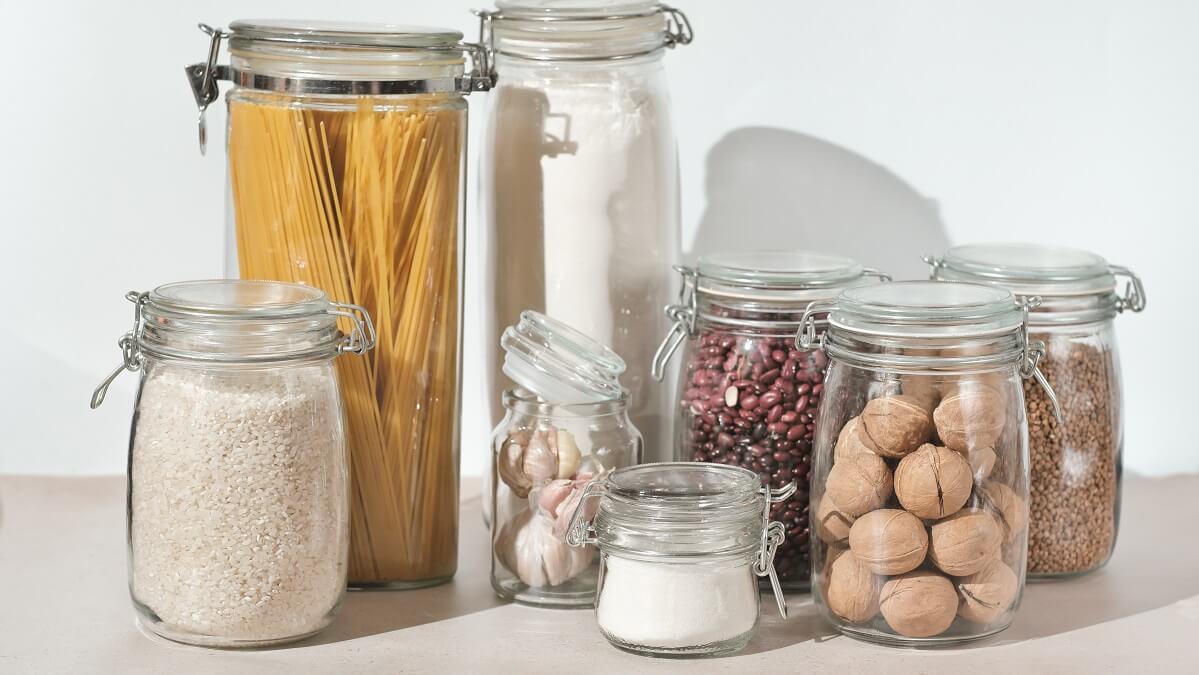Most of us like to have a well-stocked fridge, especially in the run-up to Christmas, but there are some things that just don’t belong in there. In fact, refrigerating some foods can actually affect their flavour or texture so you might not be getting the best out of some of your staples.
Since refrigeration slows the growth of bacteria, many people assume that it might be the best place for the majority of your grocery haul. However, although the US Department of Agriculture says the fridge is “one of the most important pieces of equipment in the kitchen for keeping foods safe”, some foods just don’t get along with colder temperatures.
Of course, the fridge is the best place for cheese, milk, eggs, meat and other perishable foods but if you pop the following eight items in the fridge, you’ll likely notice a difference in quality.
Potatoes
Potatoes are best kept in a cool, dark place, such as a pantry or cupboard. They do like to be cool but not cold. Researchers have found that the ideal temperature to store potatoes is 8°C to 14°C, and the temperature of most fridges is certainly colder than that.
Refrigerating them can cause potatoes to develop a sweet taste, this is because colder temperatures cause the starch to convert to sugar.
Read: How long do your pantry staples stay fresh?
Bread
Bread is a tough one because leaving it out on the counter for too long will allow it to go mouldy but, according to Martha Stewart, popping a loaf of bread in the fridge can cause it to go dry and stale quicker.
If your household gets through a whole loaf in a timely manner, you can leave it out. But if you find you’re always throwing mouldy slices away at the end of the week, consider keeping it in the freezer and just taking out a few slices at a time to toast or defrost to eat right away.
Coffee
Keeping your coffee in the fridge or freezer could cause condensation that affects the flavour. Instead, you should keep your coffee at room temperature in an opaque, airtight container, out of direct sunlight and away from appliances that produce heat.
Plus, if the bag isn’t fully sealed each time you return it to the fridge, your coffee could take on that interesting fridge odour and taste that nobody likes.
Onions
Onions should be kept in a cool, dark and well-ventilated space such as a kitchen cupboard. If the space isn’t ventilated, ensure they’re not next to anything that will absorb their odour.
Onions are prone to absorbing moisture and going mushy when kept in the fridge.
Garlic
Similar to onions, whole garlic cloves and garlic bulbs with skin on should also be kept in a cool, dark and well-ventilated place.
The cold temperature can stimulate sprouting in garlic heads if kept in the fridge, according to Good Housekeeping.
Peeled or minced garlic, such as the stuff you get in jars, should certainly be kept in the fridge once it’s been opened though. Just make sure the lid is always on tight, otherwise you’ll get a good waft of garlic every time you open the fridge.
Read: Nutritionists reveal their pantry staples
Tomatoes
This one is up for debate, but many people believe there’s nothing better than a warm, juicy tomato in a salad or sandwich. When chilled, an enzyme produced in tomatoes causes the fruit’s cell membranes to break down, meaning they’ll go off quicker and become mealy.
But they also don’t last too long on the counter. If you can, only purchase as many as you know you’ll be able to consume quickly.
Baked goods
When baked goods such as cookies, doughnuts and pastries are kept in the fridge, the fats and butter in them can harden, affecting both the texture and the flavour.
However, there are exceptions to this rule. Martha Stewart says the fridge is the right place for sweets made with raw dairy and/or eggs, such as certain pies (pumpkin, cream, custard), or cakes and cupcakes iced with buttercream frosting.
Read: Fridge organising tips
Honey
It is not necessary to refrigerate honey. In fact, it’s much easier to handle if you don’t because the cooler temperature will cause the honey to solidify. This makes it difficult to use when you need it – you will have to warm it up to get it back to a liquid state. Honey may be frozen, although there’s really no need.
Do you keep any of these things in the fridge? Are there any other items you’d add to the list? Let us know in the comments section below.

